Fall color is upon us, in all its heartbreakingly beautiful glory.
All the key factors need to be in place for spectacular hues to emerge: abundant summer moisture, sunny fall days, and cool but not freezing nighttime temperatures. Brilliant yellows and golds grab our attention, but let's go deeper in tone, to the often-overlooked drama of fall's purple foliage.
There's more to fall color than just red: it's the blend of red, yellow, orange, tan, green, and purple that thrills us. Although some fall displays are famous for their short-but-sweet mass of single color (Colorado's golden aspens come to mind), the truly iconic images of autumn feature a rich tapestry of many colors (think Vermont/New Hampshire/Maine). And while bright is beautiful, it's the contrast of the wine-dark colors—purple, maroon, burgundy—that creates the drama. go deeper in tone, to the often-overlooked drama of fall's purple foliage. Homeowners and gardeners can follow nature's example by incorporating plants that go dramatically dark in fall.
A few suggestions from around the Garden to try in your garden:
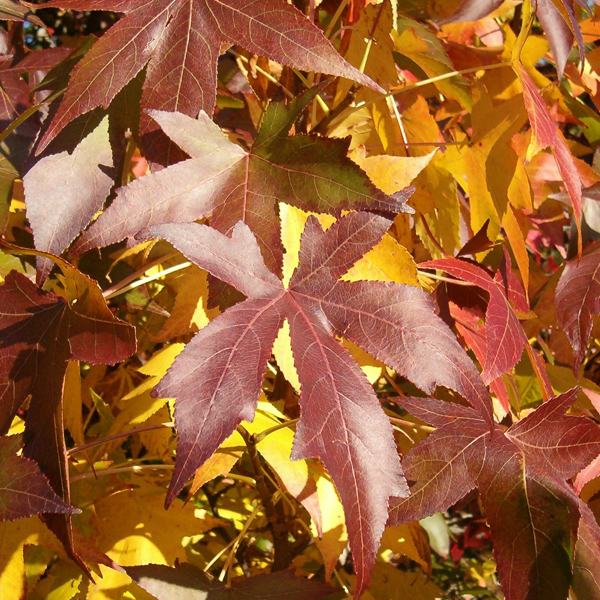
Sweetgum begins its fall coloring in dark purplish-burgundy, turning to bright orange, then yellow.
Sweetgum
(Liquidambar styraciflua)
An underused beauty in midwestern yards and gardens, sweetgum has standout, star-shaped leaves that start out glossy green in summer, changing to glorious purple/red/multitones in fall. The colorful show endures longer than most trees. On the large side (ultimately 60 to 70 feet), sweetgums can anchor a landscape as powerfully as any oak or maple.
There's a handsome cluster on the walking path near the Arch Bridge to Evening Island—check out the location with our Plant Finder.
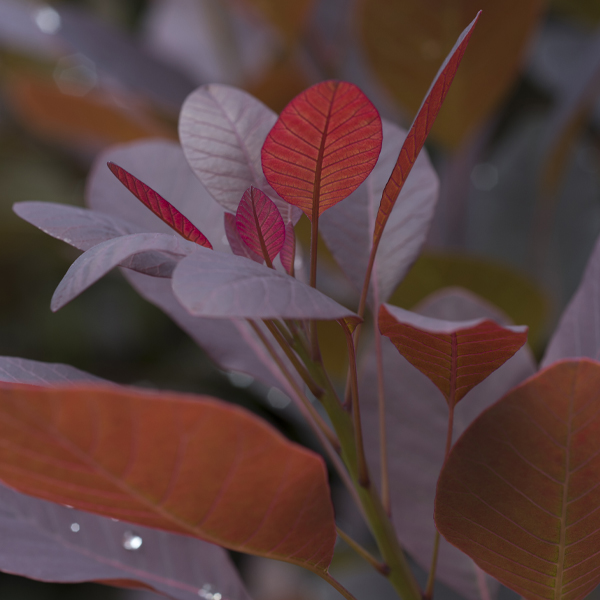
Even the "smoke" on 'Royal Purple' smoke tree is purple.
Smoke tree
(Cotinus coggygria)
In the small tree category is the smokebush or smoke tree. Backlit by the sun, the pretty, disc-shaped leaves of smoke tree 'Royal Purple' flash maroon-red. It's an effect matched only by this small tree's "smoke"—the puffy tufts that dot the tree post-flower. Keep your Cotinus neatly pruned (it's wonderful as a standard) to keep it from going gangly.
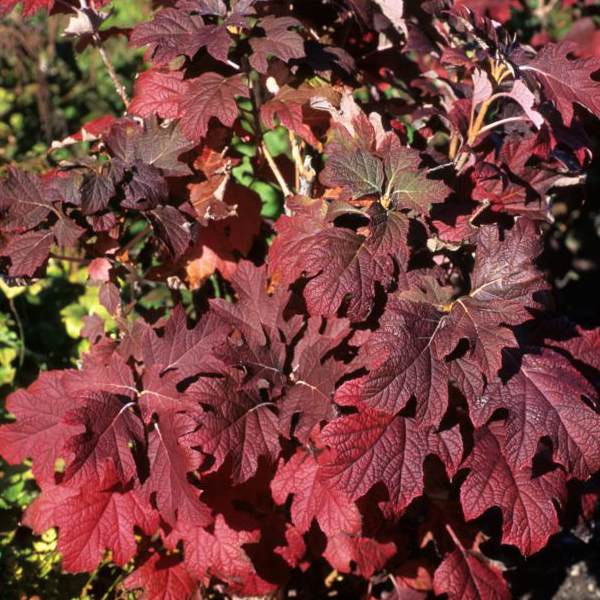
Oakleaf hydrangea 'Pee Wee' is handsome in all four seasons.
Oakleaf hydrangea
(Hydrangea quercifolia)
It's the hydrangea that has it all: interesting leaf shape, nicely peely bark, lovely and long-lasting blooms, and stunning bronze-y to purple fall color. It's a great shrub choice for pumping color and texture into a shady spot in the garden.
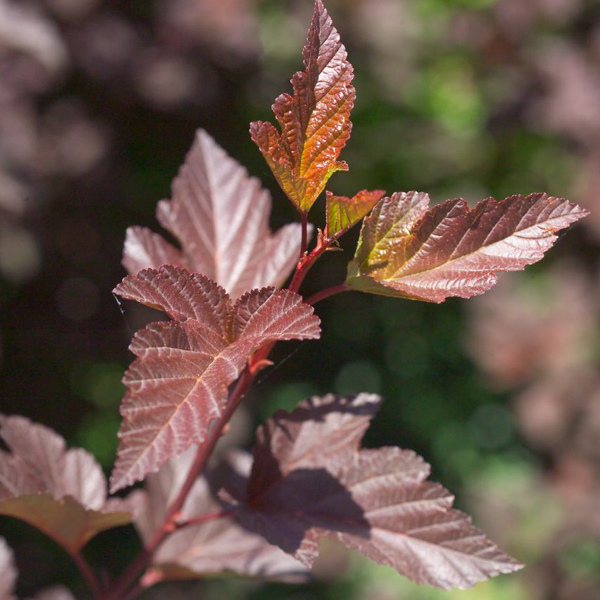
Diablo® Eastern ninebark glows in the middle level of the Waterfall Garden. Find it where the English Walled Garden meets the Great Basin walk as well.
Eastern ninebark
(Physocarpus opulifolius)
Another purple shrub of note—and a horticulturist's favorite here at the Garden—is Eastern ninebark. Like oakleaf hydrangea, it has the four-season interest that homeowners crave. Physocarpus opulifolius 'Monlo' (known commercially as Diablo®) delivers a dark dose of purple/copper color all year, plus red highlights in fall. It makes a terrific hedge, or use it as a specimen or understory plant.
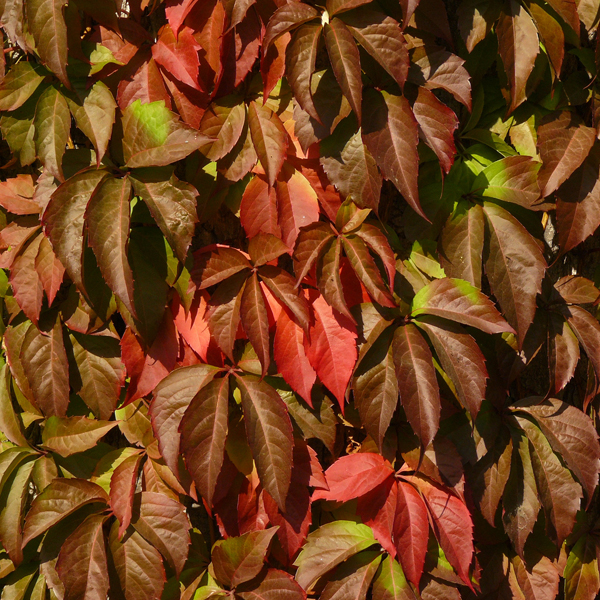
The color purple: vining Virginia creeper's fall foliage transforms walls, fences, and trellises.
Virginia creeper
(Parthenocissus quinquefolia)
Craving purple color but lacking space for trees or shrubs? Go vertical with Virginia creeper, a reliably hardy vine that's used to great effect at the Garden—especially on the walls of the English Walled and Regenstein Fruit & Vegetable Gardens. A wall of purple is a splendid way to set off chartreuse foliage or late-season pink or white flowers.
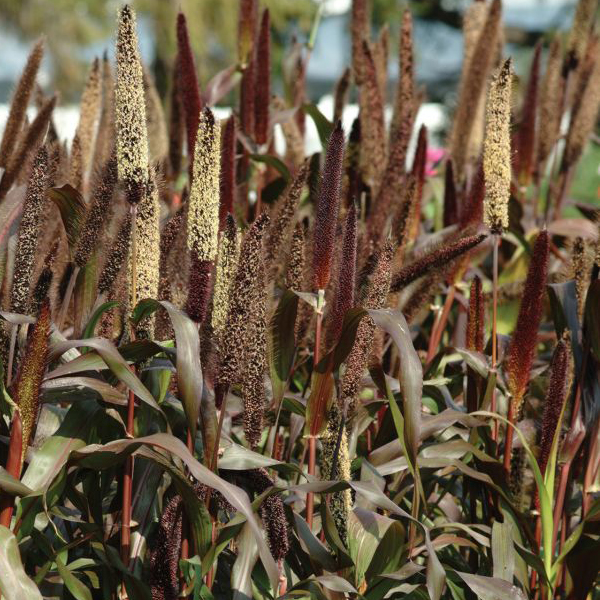
Deep and dramatic color: 'Purple Baron' millet is one of the darkest purple annuals we've seen.
Ornamental Millet
(Pennisetum glaucum)
Now drawing attention—and cameras—to the beds outside the Bulb Garden: a humble millet with the regal name 'Purple Baron'. Deep, rich, near-black purple leaves and plumes partner with everyday mums and decorative peppers for a sensational trio. Works in containers, too (and the birds love it).
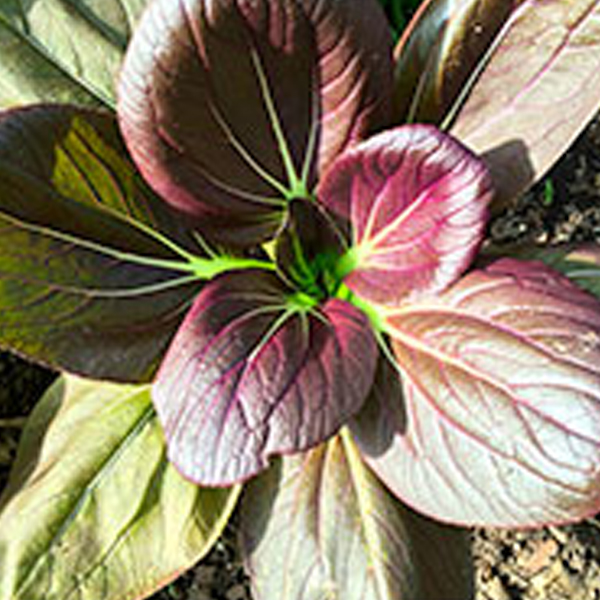
Tucked into bare spots in fall flower beds, edible 'Red Choi' is a cool-season vegetable that's both pretty and delicious.
Pak choi
(Brassica rapa 'Red Choi')
The contrast of purple leaves can be added in unexpected and inexpensive ways, too. Out at the Regenstein Fruit & Vegetable Garden, vegetables with purple foliage—kales, brussels sprout hybrids, lettuces—prove that edible plants can be as dynamic as any flower in the garden. 'Red Choi' leaves form a rosy-purple rosette that can be picked young for salads, or harvested whole for late-season stir-fries.
Karen Zaworski was a garden writer and photographer from Oak Park, Illinois.
Sweetgum image licensed under CC BY-SA 3.0 via Wikimedia Commons.
Parthenocissus quinquefolia by Manfred Heyde - Own work. Licensed under CC BY-SA 3.0 via Wikimedia Commons.


